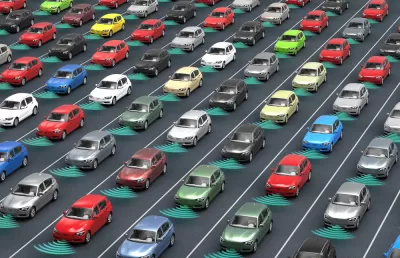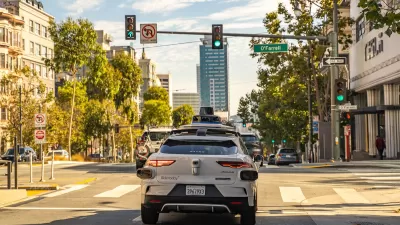Planners must be realistic. Autonomous vehicles will probably provide smaller net benefits, including safety benefits, than optimists predict.

I take no pleasure in saying "I told you so" concerning autonomous vehicle risks, but I do hope that last week's fatal crash involving a self-driving car will introduce some reality to discussions of autonomous vehicle benefits and costs, as discussed in my recent column, "The Many Problems with Autonomous Vehicles."
Let's be realistic about the reliability and risks of autonomous vehicles. How frequently does your telephone, computer, websites or GPS navigation system fail to perform as expected? Probably daily. Do those failures cause death? Probably not, thank goodness. However, vehicle operating system failures can have fatal consequences so it is important to evaluate them critically.
The United States currently averages a little more than one traffic death per 100 million vehicle-miles. So far, vehicles have driven an estimated 5-10 million vehicle-miles with autonomous operation (about two million by Uber and four million by Waymo. Tesla claims much more, but its Autopilot only offers limited autonomy), and caused two deaths, giving them a very poor safety record compared with human operation.
Autonomous vehicle system designers will certainly learn from these accidents and hopefully will reduce future risks. However, operating a motor vehicle in mixed traffic involves many layers of complexity, which will continually introduce new risks, so like a wack-a-mole game, new hazards will pop up.
Optimists claim that, because human error contributes to 90% of crashes, autonomous vehicles will reduce crash rates and insurance costs by 90%, but that claim overlooks additional risks [pdf] these technologies are likely to introduce:
- Hardware and software failures. Complex electronic systems often fail, and even small vehicle operating system failures—a false sensor, distorted signal, or software error—can have catastrophic results. Self-driving vehicles will certainly have failures that contribute to crashes; the question is their frequency compared with human drivers.
- Malicious hacking. Self-driving technologies can be manipulated for amusement or crime.
- Increased risk-taking. When travellers feel safer they tend to take additional risks, called offsetting behavior or risk compensation. For example, if autonomous vehicles are considered very safe, fewer passengers may wear seatbelts and other road users may take greater risks. Pedestrians may become less cautious.
- Platooning risks. Many potential benefits, such as reduced congestion and pollution emissions, require platooning (vehicles operating close together at high speeds on dedicated lanes), which can introduce new risks, such as human drivers joining platoons and increased crash severity.
- Increased total vehicle travel. By improving convenience and comfort autonomous vehicles may increase total vehicle travel and therefore crash exposure.
These new risks will probably cause crashes, so net safety impacts are likely to be smaller than the 90% reductions that advocates claim. Sivak and Schoettle [pdf] conclude that autonomous vehicles may be no safer per mile than an average driver, and may increase total crashes when self- and human-driven vehicles mix. Groves and Kalra argue that autonomous vehicle deployment is justified even if they only reduce crash rates 10%, but their analysis indicates that net safety gains are significantly reduced if this technology increases total vehicle travel. For example, if autonomous vehicles reduce per-mile crash rates 10% but increase vehicle travel 12%, total crashes, including risks to other road users, will increase.
Many factors will affect these safety impacts, including how vehicles are programmed, and whether they increase or reduce total vehicle travel. For example, to maximize mobility autonomous vehicles can be programmed to operate faster, take more risks in unpredictable situations, and platoon; to maximize safety they can be programed to drive slower, be more cautious, for example, stopping for human instructions in any unexpected situation, and high occupant vehicle (HOV) lanes and road pricing can encourage vehicle sharing.
The following table is my summary of the expected benefits and costs of autonomous vehicle technologies. All of these factors should be considered when evaluating autonomous vehicle policies.
Autonomous Vehicle Potential Benefits and Costs [pdf]
Benefits |
Costs/Problems |
|
Reduced drivers’ stress and productivity. Reduce the stress and allow motorists to rest and work while travelling. Mobility for non-drivers. Provide independent mobility for non-drivers which can reduce motorists’ chauffeuring burdens and public transit subsidy needs. Reduced driver costs. Reduce costs of paid drivers for taxis and commercial transport. Increased safety. Reduces some crash risks, and therefore costs and insurance premiums. May reduce high-risk driving, such as when impaired. Increased road capacity and reduced costs. May reduce congestion, allow narrower lanes, and automate traffic law enforcement, reducing roadway costs. Increase fuel efficiency and reduce pollution. May increase fuel efficiency and reduce pollution emissions. Reduced parking costs. Reduces demand for parking at destinations. Supports vehicle sharing. Could facilitate carsharing and ridesharing, helping to reduce total vehicle ownership and travel, and associated costs. |
Increases costs. Requires additional vehicle equipment and services, and possibly roadway infrastructure. Additional risks. Introduces new risks, such as system failures, be less safe under certain conditions, increase crash severity due to platooning and higher speeds, and encourage road users to take additional risks (offsetting behavior). Reduced security and privacy. May be used for criminal and terrorist activities (such as bomb delivery), vulnerable to information abuse (hacking), and features such as GPS tracking and data sharing may reduce privacy. Induced vehicle travel and increased external costs. By increasing travel convenience, autonomous vehicles may induce additional vehicle travel and sprawled development. Social equity concerns. May have unfair impacts, for example, by reducing the convenience and safety of other modes. Reduced employment and business activity. Jobs for drivers should decline. Reduced support for other solutions. Optimistic predictions of autonomous vehicle benefits may discourage communities from implementing more cost-effective transport solutions such as better walking and public transit improvements, and other demand management strategies. |
Some of these impacts, including increased vehicle costs, reduced driver stress, and increased productivity, directly affect users. Others, such as changes in accidents, congestion, roadway costs, pollution emissions, and mobility options for non-drivers, are external impacts. The total magnitude of these impacts will depend on how autonomous driving technologies affect vehicle travel: improved convenience and productivity cause vehicle travel to increase, traffic problems such as congestion, accidents, pollution emissions, and roadway costs may increase. But, if more affordable shared mobility options allow households to reduce their vehicle ownership, and therefore leverage reductions in total vehicle travel, traffic problems should decline. This suggests that, to maximize net benefits, public policies should focus on resource-efficient and shared urban mobility, which autonomous vehicles can facilitate, rather than autonomous vehicle technology as an end in itself.
As planners, our quest is for a realistic assessment of total benefits and costs in order to identify the policies that will result in the greatest net benefits to society.

Planetizen Federal Action Tracker
A weekly monitor of how Trump’s orders and actions are impacting planners and planning in America.

Maui's Vacation Rental Debate Turns Ugly
Verbal attacks, misinformation campaigns and fistfights plague a high-stakes debate to convert thousands of vacation rentals into long-term housing.

Restaurant Patios Were a Pandemic Win — Why Were They so Hard to Keep?
Social distancing requirements and changes in travel patterns prompted cities to pilot new uses for street and sidewalk space. Then it got complicated.

In California Battle of Housing vs. Environment, Housing Just Won
A new state law significantly limits the power of CEQA, an environmental review law that served as a powerful tool for blocking new development.

Boulder Eliminates Parking Minimums Citywide
Officials estimate the cost of building a single underground parking space at up to $100,000.

Orange County, Florida Adopts Largest US “Sprawl Repair” Code
The ‘Orange Code’ seeks to rectify decades of sprawl-inducing, car-oriented development.
Urban Design for Planners 1: Software Tools
This six-course series explores essential urban design concepts using open source software and equips planners with the tools they need to participate fully in the urban design process.
Planning for Universal Design
Learn the tools for implementing Universal Design in planning regulations.
Heyer Gruel & Associates PA
JM Goldson LLC
Custer County Colorado
City of Camden Redevelopment Agency
City of Astoria
Transportation Research & Education Center (TREC) at Portland State University
Jefferson Parish Government
Camden Redevelopment Agency
City of Claremont






























